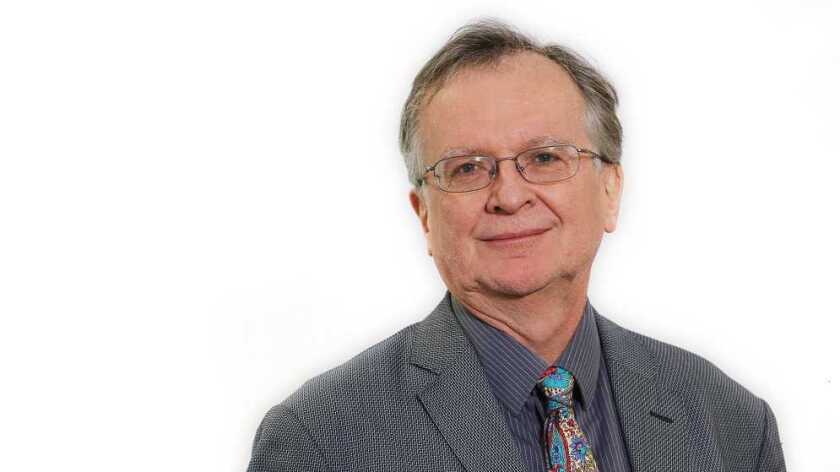“There are a lot of stories and myths about 5G. It’s now a reality.” In German, she added: “Jetzt geht’s endlich los.” That means: “It’s happening at last.”
But remember that 5G will be a standard, just as 3G was nearly a standard and 4G LTE has definitely been a standard – though 2G never was.
Today, there’s a huge world effort to ensure 5G is, finally, a global standard. Only a few people follow in detail what the standards geeks – I use the term approvingly – are doing. But it’s important. Their work means that the day in 2022 you turn on a 5G terminal in your hotel room in Warsaw or Washington to watch a movie it will work. Even better, it means that the aircraft you flew in will be able to connect to the diagnostics network at either Frederic Chopin or Ronald Reagan airport.
So, in spite of Nemat’s declaration, where are we in reality with the standards? In June 2018 3GPP, the forum for those standards geeks, issued release 15, indicating we were almost there, defining phase one of what it calls “new radio” or NR. When standards people talk of something being new, as opposed to version 3.26 or whatever, you know it really is new.
Functional freeze
But that’s phase one, as 3GPP helpfully indicated. The second phase is release 16, which is not expected until 2020 – in March for “functional freeze”, June for “protocols stable”.
Release 16 will also cover what’s called ultra-reliable low-latency communication, essential for many of the proposed use cases for 5G. And then there’s still, on current schedules, release 17, covering enhanced machine-type communication. When will that be? “TBC” – to be confirmed – says 3GPP.
So where are we in the real world? US operators AT&T and Verizon are both trying out pre-standard 5G on services for fixed wireless access (FWA), and T-Mobile US is planning to go that way. With such controlled uses, they avoid a lot of the problems of operating before the final standards are set: no one will expect to pick up a 5G terminal from a home in upstate New York and move it to somewhere rural like Colorado.
Sunrise is trying much the same sort of thing in Switzerland, using 5G as an alternative to fibre-to-the-home (FTTH) – though Olaf Swantee, CEO of Sunrise, told me that one of his challenges is that the home terminals aren’t yet being made in enough volumes for a big rollout.
But whether you’re in Switzerland or the US, this fixed 5G will give network engineers experience in how the new standard works and how resilient it is. Remember, wireless is still something of a mysterious art as well as a technology. Network operators don’t even know what to expect from, say, rain and snow, when they offer 5G services.
Electrical noise
And remember also that many of the future uses touted for 5G are inside buildings – including factories and warehouses where there is a high-level of electrical noise.
Experience will be built up over the next couple of years, with closed systems using spectrum from 3.5GHz in Sunrise’s case to new millimetre bands – such as 24 and 28GHz – that US telcos will be pioneering. This practical knowledge will be hugely important once we see the start of mobile 5G services, where global standards will apply.
One of the undoubted benefits of the move towards 5G is that regulators are opening up more spectrum worldwide, and 5G will be inherently more efficient in using that new spectrum.
According to Chris Pearson, CEO of US lobby group 5G Americas, even higher frequencies than 28GHz will follow.
The regulator, the Federal Communications Commission (FCC), will be looking at 37, 38 and 47GHz by the end of 2019, he told me. And in March we reported the FCC saying it wants to create a new category of experimental licences for use of frequencies between 95GHz and 3THz – that’s radio waves with wavelengths from 3mm to only a tenth of a millimetre.
Sharing spectrum
There will be new rules for the use of all this new spectrum. As I reported on this page in October/November 2018, Americans will have to share spectrum in the 3,500MHz band with the US Navy.
There will be computer-based controls to ensure base stations do not interfere with the Navy, which uses that band for missile-detecting radar.
Emmanuel Lugagne Delpon of Orange Labs, who chairs another industry body, Next Generation Mobile Networks, says the first real uses of 5G will be in the consumer area.
“It will provide a lot of benefits, such as bandwidth, speed and fixed wireless access.” In the longer term, he adds, we will see uses like massive internet of things (IoT) services. For that, it will be necessary to have very close partnerships between operators and vertical industries. It’ll happen, but there’s a lot of work ahead.






